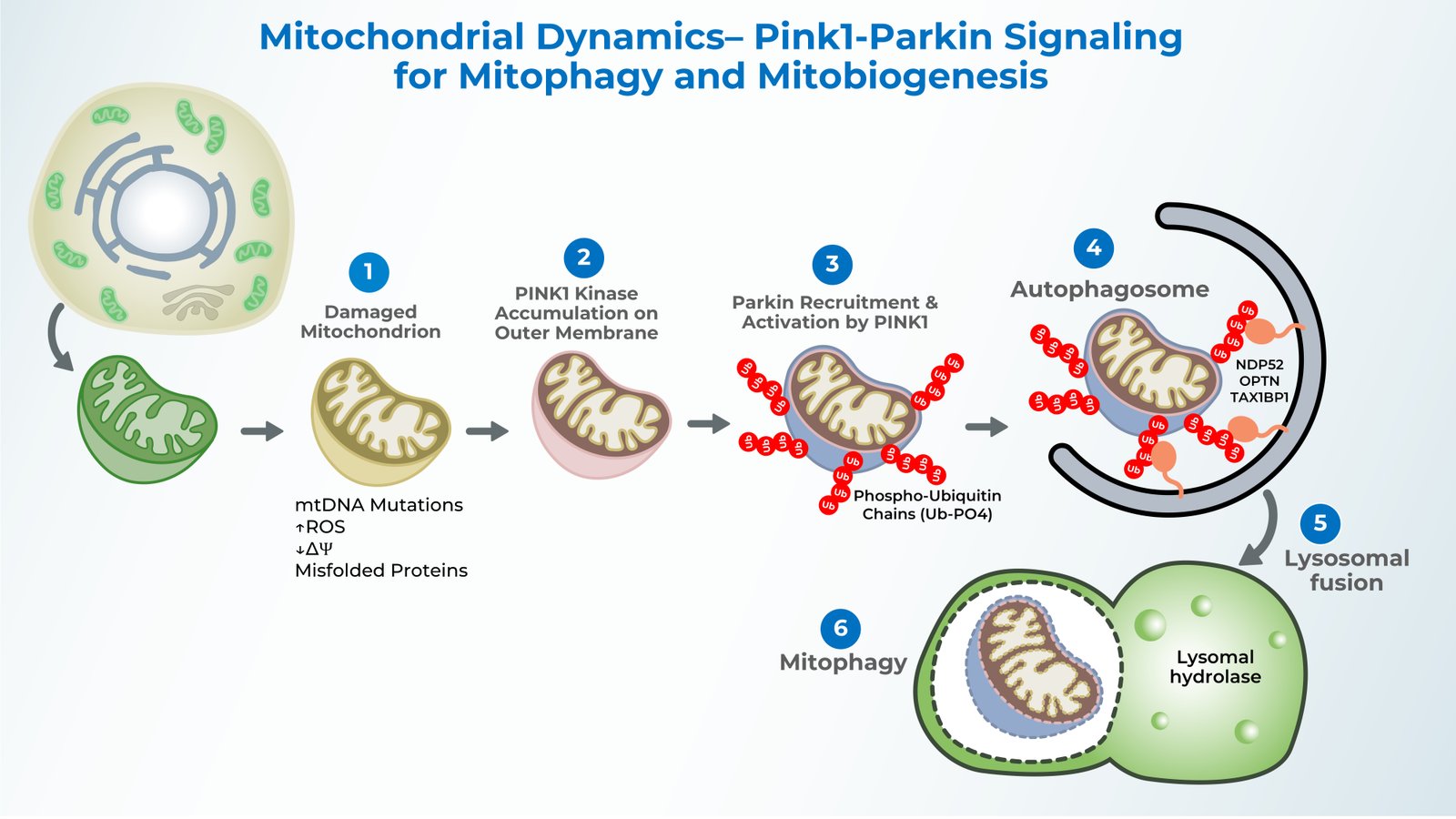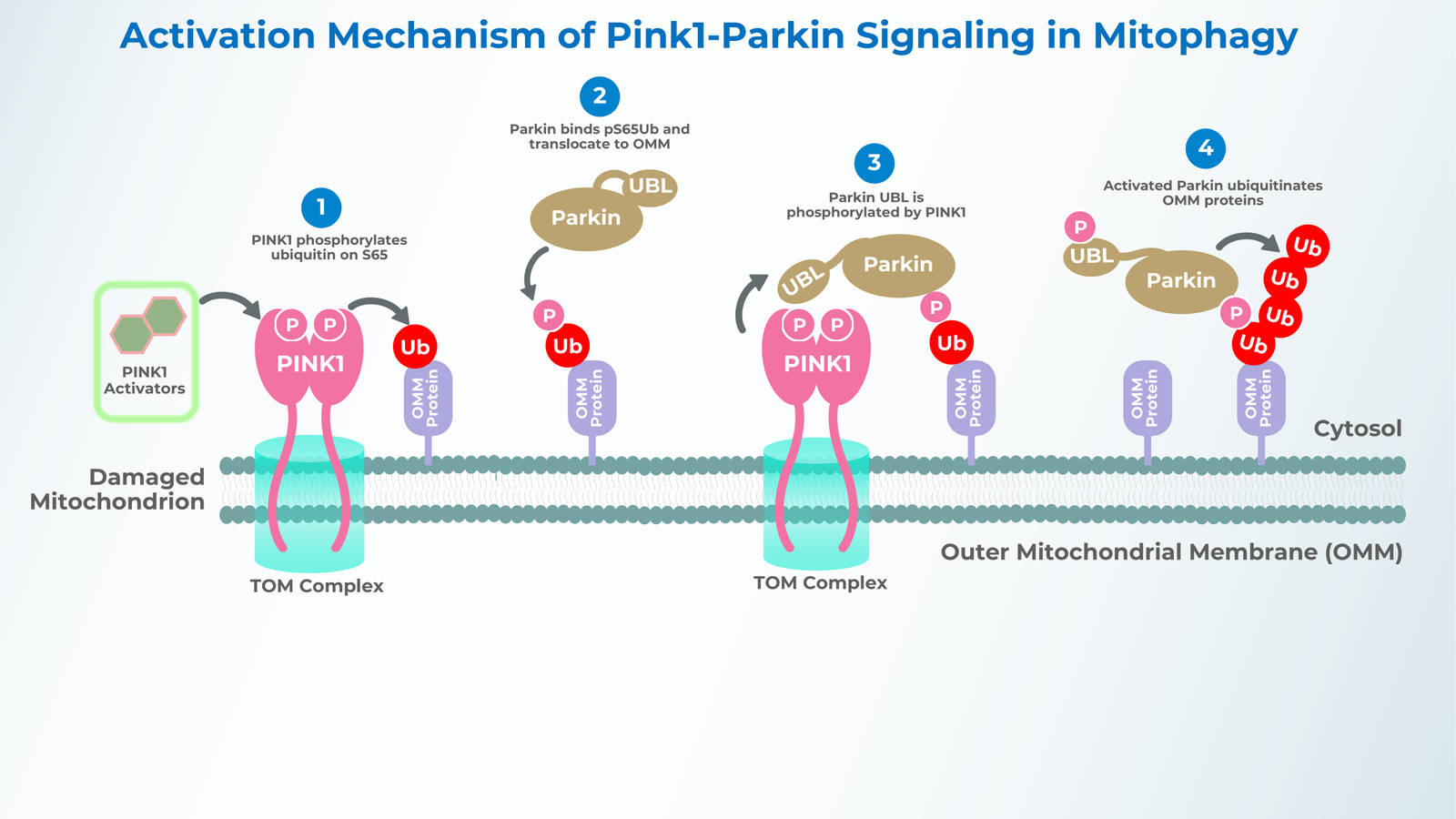Restoring Mitochondrial functions
Advancing therapies through mitophagy, PINK1/Parkin activation, and mitochondrial homeostasis.
The Role of Mitochondria in Neurodegenerative Diseases
Dysfunction in the protein and organelle degradation system is believed to underlie most forms of neurodegenerative disease. In Alzheimer’s disease and Parkinson’s disease, protein aggregation, in conjunction with accumulation of defective mitochondria, leads to neuronal death. Therapeutic restoration of mitochondrial functions involves removal of damaged mitochondria by PINK1/Parkin mediated mitophagy as well as promotion of mitobiogenesis.

Figure 3. Various physiological stresses can damage mitochondria. PINK1 kinase acts as a sensor of mitochondrial damage and becomes accumulated on outer membrane of damaged mitochondria. Activated PINK1 helps to recruit Parkin E3 ligase from cytosol to damaged mitochondria. PINK1 phosphorylates and activate Parkin which then ubiquitinates mitochondrial proteins resulting in autophagosome formation and lysosomal clearance of damaged mitochondria. This process is called mitophagy. In addition, PINK1/Parkin pathway promotes mitobiogenesis to restore mitochondrial homeostasis. Defects in mitophagy is known to cause neurodegenerative diseases such as Parkinson’s disease (PD) and mitophagy enhancers are being developed as potential therapeutics for PD.
PINK1 and Mitophagy: A Therapeutic Avenue
Mitochondria localized PINK1 kinase in concert with Parkin E3 ligase act as a guardian of mitochondrial quality control. Drugs that activate PINK1/Parkin mediated mitophagy can offer disease modifying therapy in PD. Progenra has developed molecular glue drug candidates with nanomolar potency that promote mitophagy. Molecular glues discovered by Progenra constitute a breakthrough MOA and a novel approach to treating neurodegenerative diseases.

Figure 4. Mitochondrial damage results in stabilization and activation of PINK1 kinase on TOM complex. Activated PINK1 phosphorylates ubiquitin on outer membrane proteins. Parkin E3 ligase binds phospho-ubiquitin and translocate to mitochondria where it is phosphorylated and activated by PINK1. Activated Parkin ubiquitinates multiple outer mitochondrial membrane proteins leading to autophagsome formation and degradation of damaged mitochondria by mitophagy. Small molecule PINK1 activators that potentiate mitophagy and mitobiogenesis could be effective treatment for neurodegenerative diseases such as Parkinson’s Disease with an underlying defect in mitophagy.
